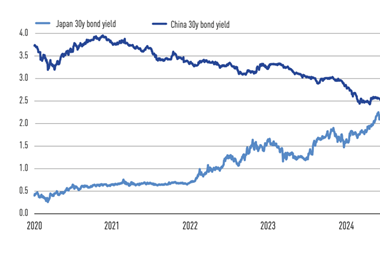The media frenzy in the UK has moved on and now as the dust is starting to settle it will be up to pensions professionals and the government in the UK to fully absorb the recommendations of the Pensions Commission.
There was a lot to take in - the final report ‘A New Pension Settlement for the Twenty-First Century’ runs to more than 470 pages - and the main focus was on the panel’s thinking on the retirement age and compulsion. “For the first time ever, pensions are as hot as an issue can get,” the Economist said.
The run-up to the report was marred by an unseemly political row between Chancellor Gordon Brown and Commission chairman Lord Turner that took place on the pages of the financial press. Pensions started to receive unprecedented coverage in the national media, which, if nothing else, is a step in the right direction.
The report had several highlights. These included linking the state pension age to life expectancy – which would see it rising to 68 by 2050. Also put forward was linking future increases in the basic state pension in line with earnings rather than prices. The State Second Pension would be changed to a flat amount.
Perhaps the most interesting proposal developed by the three-member Commission was the introduction of a funded national pension scheme with individual accounts, modelled in part on the Swedish PPM system. The new system could be up and running by 2010.
The NPSS would include auto enrolment with the right to opt out, a minimum employee contribution of 5% and a “modest compulsory” matching employer contribution of 3%.
This idea met with a mixed response from commentators and industry bodies. Contributions to the proposed National Pension Savings Scheme, which would feature auto-enrolment, would be held in individual accounts and invested in a range of funds.
These funds would be bought in bulk from the wholesale fund management industry, with a default fund for those who make no selection.
The report said the Swedish Premium Pension Scheme is an example of this type of system, although it is compulsory rather than auto-enrolled.
But the NPSS would differ from the PPM in that the scheme would negotiate fund management mandates covering major asset classes - it puts the number at between six and 10 - with very low fees but large volumes. The Swedish system has a potential choice of 700 funds, which the Commission says is too much.
Turner says the proposed funds could form the totality of the NPSS system or could be combined with other funds. This would allow members to invest in alternative asset classes such as private equity and hedge funds.
Allocations could be changed on an annual or semi-annual basis. The default fund should be lifestyle-smoothing fund, shifting members from equities to bonds over time.
Turner proposes a winding-down of the state’s role in pay-as-you-go provision. The report says PAYG expenditure “should in the long term be concentrated on securing as generous and as non-means-tested flat-rate state pension provision as possible, with the state withdrawing gradually from its role in PAYG earnings-related pension provision as the NPSS provides a proven alternative earnings-related system”.
Turner responded to questions about the possibility of employers “shepherding” employees out of such a scheme, by reiterating the importance of keeping employer contributions modest. “There is no perfect way forward but the danger is relatively limited,” he said.
According to Turner, the Commission’s proposals would not trigger a dramatic rise in public spending over the next 15 years. However, increases would be required after 2020.
Turner says it’s “absurd” to question whether any politicians or commentators agreed or disagreed completely with the 400-page report. He added: “We need broad debate.”
“It is wrong to talk about a crisis of pensioner income today, but the problems in the UK’s pension system will grow increasingly worse unless a new pensions settlement for the 21st century is now debated, agreed and put in place.”












No comments yet